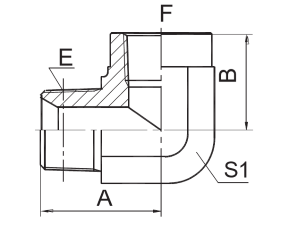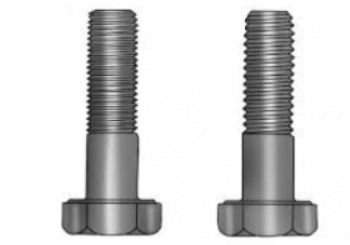In the world of plumbing, hydraulics, and fluid systems, threads play a crucial role in ensuring tight seals and seamless connections. Among the various thread standards, NPT (National Pipe Thread) and standard threads are two commonly encountered types. In this detailed guide, we will explore the key differences between NPT and standard threads, shedding light on whether NPT is considered a standard thread.
Understanding NPT Threads
90° Elbow NPT Male / NPT Female
NPT, or National Pipe Thread, is a widely recognized thread standard used predominantly in the United States. Its primary purpose is to facilitate leak-proof connections in fluid-carrying systems such as pipes, fittings, and valves.
Key Characteristics of NPT Threads
Tapered Design: One of the hallmark features of NPT threads is their tapered design. This means that the threads gradually become larger in diameter as they move away from the end of the fitting. This tapering is instrumental in creating a snug fit and ensuring a reliable seal.
Thread Angle: NPT threads have a thread angle of 60 degrees, which is slightly different from other thread standards.
Inches Measurement: NPT threads are measured in inches, making them distinct from metric threads. Common NPT sizes include 1/4″, 1/2″, 3/4″, and so on.
Applications of NPT Threads
NPT threads are commonly found in plumbing systems, gas lines, hydraulic systems, and other industrial applications in the United States. They are renowned for their ability to prevent leaks and ensure a tight connection even in high-pressure environments.
Standard Threads: Defining the Basics
1st Photo: Fine Thread 2nd Photo: Coarse Thread
The term “standard threads” is somewhat ambiguous, as it doesn’t refer to a specific, universally recognized thread standard like NPT. Instead, it often denotes threads that adhere to common industry norms and practices, which may vary depending on the region and application.
Characteristics of Standard Threads
Diverse Range: Standard threads can encompass a wide range of thread standards, including but not limited to NPT, BSP, and metric threads. The characteristics of standard threads may vary significantly based on the specific thread standard being used.
Application-specific: The suitability of standard threads depends on the application and industry. What may be standard in one context might not be standard in another.
Is NPT a Standard Thread?
In essence, NPT is a specific type of thread standard, and it is not synonymous with what is commonly referred to as “standard threads.” NPT is uniquely characterized by its tapered design, 60-degree thread angle, and measurement in inches. On the other hand, “standard threads” can encompass a broader spectrum of thread types with varying characteristics.
Practical Considerations
When working with threads, it’s essential to consider the following:
Application Requirements: Choose the thread type that aligns with the specific requirements of your application, whether it’s NPT, BSP, or another standard.
Compatibility: Ensure that the threads of your components are compatible to avoid complications during assembly.
Sealing: Pay attention to the sealing requirements, especially in systems where preventing leaks is critical.
Final Thought
While NPT is a distinct thread standard known for its tapered design and use in the United States, “standard threads” refer to a broader category that encompasses various thread standards. Understanding the differences between NPT and standard threads is vital for selecting the right thread type for your application and ensuring leak-free connections in fluid systems.
Post time: Sep-21-2023



